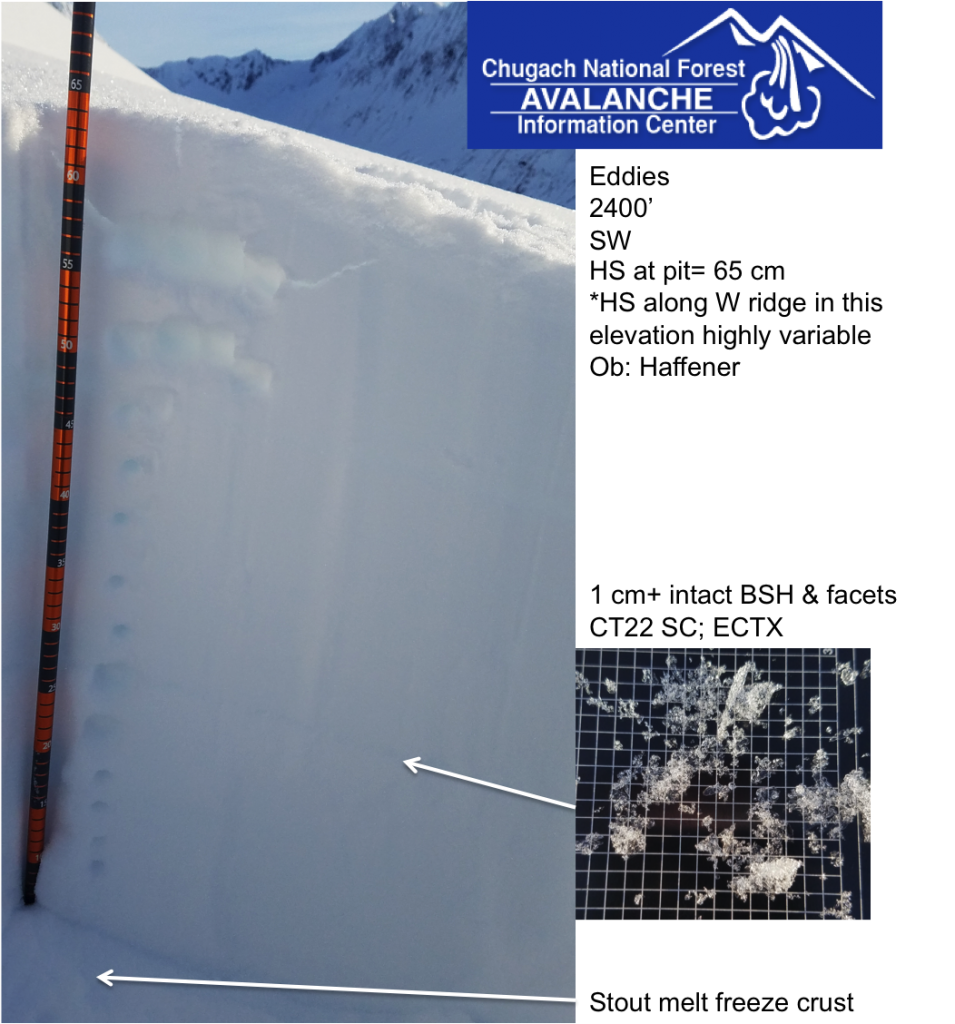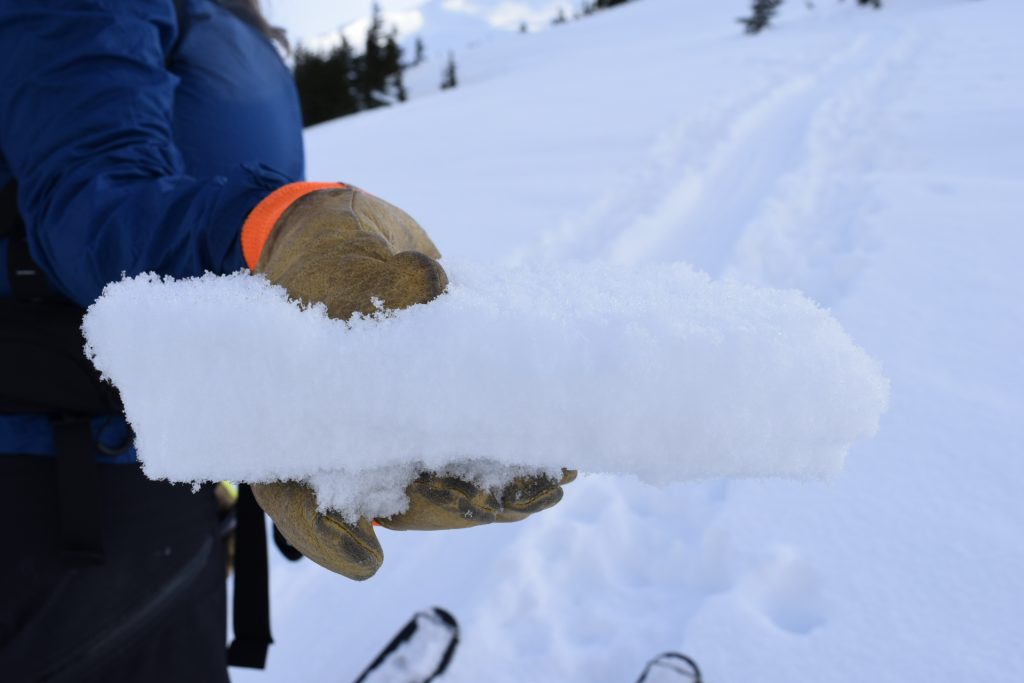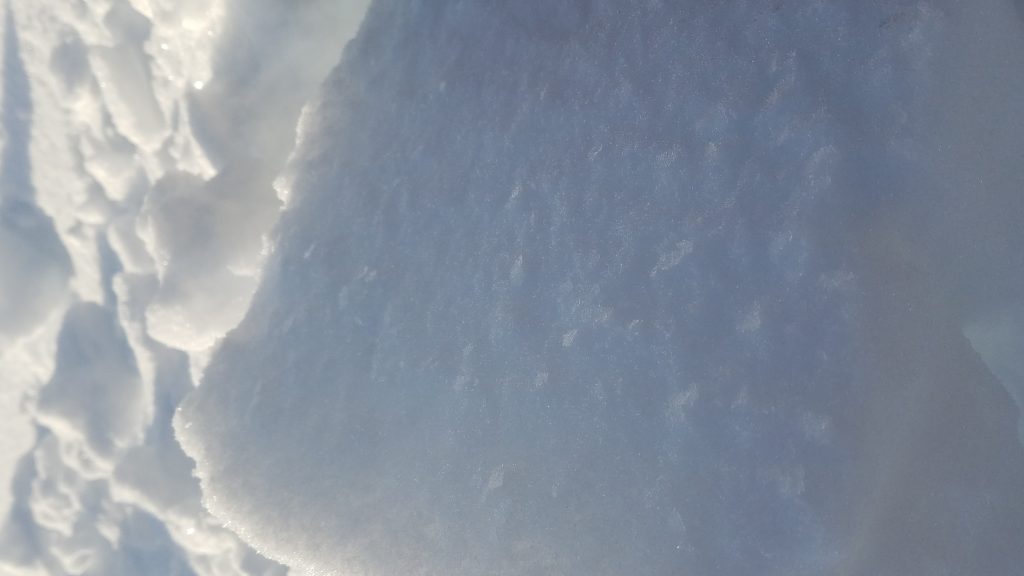None.
Observation: Turnagain
Location: Eddies
Ascended to 2500′ on Eddies. We found propagation potential in snow pits on two different weak layers. Also found wind affected snow above 1500′ forming a few inch thick wind crust beneath the 1″ of new snow. We were tracking the depth of the January melt freeze crust (MFC) in the snowpack and the thickness of the crust as we gained elevation.
Overcast at 1100. Clearing through the day to clear skies with a few clouds to the South at 1700.
Temperatures warmed through the day from mid 20s F to low 30s at the road and from mid 20s to upper 20s at 2400'.
No precipitation.
Calm winds.
1" of new snow over decomposing particles below 1500'. The snow below the 1" from yesterday was wind affected along the standard uptrack above 1500'. We found 2-4" wind crusts that were slightly breakable on ascent and fairly supportable on the descent.
We probed for depth and dug test pits every 500' from 1000'-2400'. In summary, we found 2 layers that exhibited propagation potential: down 1.5' on facets over a stout melt freeze crust (MFC) at 1500' and down 1.3' on buried surface hoar (BSH) and facets over a stout melt freeze crust at 2100'.
We were also looking to find out when the Jan. MFC transitioned from breakable to stout. At 1000' the MFC was breakable and had facets in between layers. At 1500' the MFC was stout. See snow pit profiles with structure and test results in photos below.

Wind affected snow visible below the 1" of new snow. Eddies headwall has been loaded from both southerly and northerly winds.

At 1000', hand pits failed on isolation down 2' on decomposing, breakable melt freeze crust and facet layers.

At 1500': propagation down 1.5' on fist hard facets over a stout melt freeze crust

At 2100': propagation down 1.3' on buried surface hoar (BSH) and facets over a stout melt freeze crust

Snow pit at 2400' on SW aspect on Eddies

Snow pit at 2400 on NE aspect in scoured area on Eddies

A slightly breakable 2-4" crust lies beneath the new 1" of snow along the uptrack above 1500"

2-4" wind crust along the uptrack above 1500'

Intact 1 cm+ buried surface hoar found at 2400' on SW aspect. Did not propagate in ECT.

View of Eddies headwall from 2100'